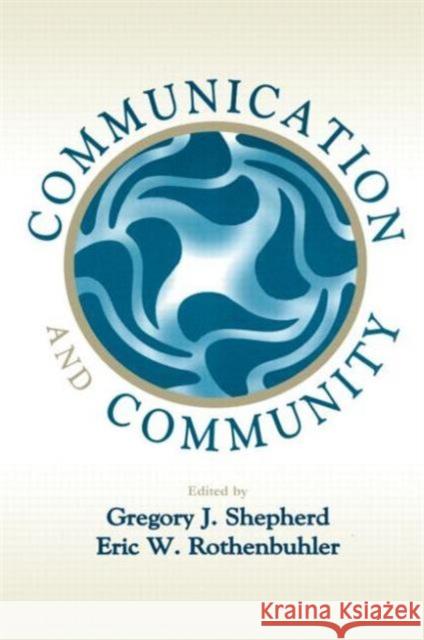Communication and Community » książka
Communication and Community
ISBN-13: 9780805831399 / Angielski / Miękka / 2000 / 306 str.
This distinctive volume combines synthetic theoretical essays and reports of original research to address the interrelations of communication and community in a wide variety of settings. Chapters address interpersonal conversation and communal relationships; journalism organizations and political reporting; media use and community participation; communication styles and alternative organizations; and computer networks and community building; among other topics. The contents offer synthetic literature reviews, philosophical essays, reports of original research, theory development, and criticism. While varying in theoretical perspective and research focus, each of the chapters also provides its own approach to the practice of communication and community. In this way, the book provides a recurrent thematic emphasis on the pragmatic consequences of theory and research for the activities of communication and living together in communities.
Taken as a whole, this collection illustrates that communication and community cannot be adequately analyzed in any context without considering other contexts, other levels of analysis, and other media and modes of communication. As such, it provides important insights for scholars, students, educators, and researchers concerned with communication across the full range of contexts, media, and modes.
This distinctive volume combines synthetic theoretical essays and reports of original research to address the interrelations of communication and community in a wide variety of settings. Chapters address interpersonal conversation and communal relationships; journalism organizations and political reporting; media use and community participation; communication styles and alternative organizations; and computer networks and community building; among other topics. The contents offer synthetic literature reviews, philosophical essays, reports of original research, theory development, and criticism. While varying in theoretical perspective and research focus, each of the chapters also provides its own approach to the practice of communication and community. In this way, the book provides a recurrent thematic emphasis on the pragmatic consequences of theory and research for the activities of communication and living together in communities.
Taken as a whole, this collection illustrates that communication and community cannot be adequately analyzed in any context without considering other contexts, other levels of analysis, and other media and modes of communication. As such, it provides important insights for scholars, students, educators, and researchers concerned with communication across the full range of contexts, media, and modes.











